[The Stand Review/Recap with Joe Lipsett] Episode 1 "The End" Makes Huge Changes to the Novel's Format
Each week Joe and Terry discuss the most recent episode of CBS All Access’s The Stand, alternating between our respective sites.
Spoilers follow for Episode 1 “The End”...
Episode 1.01 “The End”: When the “Captain Trips” flu epidemic wipes out more than 99% of the population, the remaining few immune to the disease, including Stu Redman, Frannie Goldsmith, and Harold Lauder, set out in search of other survivors, all the while, experiencing visions of the nurturing Mother Abagail and the menacing figure of The Dark Man.
TERRY
To say that I’ve been quietly anticipating this new adaptation of The Stand while simultaneously biting my fingernails at the thought that it’s going to fail would be an understatement, Joe. For a lot of Constant Readers, The Stand is the Stephen King book: a sprawling narrative that takes traditional fantasy tropes and gives them a modern make-over; an epic that quickly and violently destroys the world’s population and then forces the few remaining people to duke it out as an exploration of the Good versus Evil fantasy trope; a modern, American version of The Lord of the Rings where Frodo becomes Stu Redman becomes Frodo, Mordor turns into Las Vegas...but the quest is still as world-shatteringly important as it was in The Lord of the Rings.
Just with, like, fewer literal dragons.
The Stand is not only a favorite among Constant Readers, but outside of Stephen King’s writing, as well. In 2008, Harris Poll named The Stand as America’s fifth favorite book of all time. In 2018, PBS’s “The Great American Read” called The Stand the 24th most-loved book in America. It’s also one of my favorite novels, even though I don’t revisit it as much as some of King’s oeuvre (I mean...1,152 pages in the uncut version).
I’ll admit, the opening of creators Josh Boone (The New Mutants) and Benjamin Cavell (Justified)’s adaptation of The Stand didn’t really jell with me immediately. We get a brief narration from Mother Abagail (Whoopi Goldberg) about dark days coming as the camera zooms across a cornfield before we’re given a location: Boulder, Colorado. Through a bit of exposition, we learn that seven billion people are dead from a superflu that’s soon to be nicknamed Captain Trips. After seeing a bunch of moldering, fly-and-maggot-covered bodies holed up in a church, we go back five months earlier and the story starts to introduce our characters.
First up is Frannie Goldsmith (Odessa Young) who is caring after her very sick (and soon to be dead) father. Meanwhile, resident creep Harold Lauder (Owen Teague) peeps at her through a literal peephole in the fence before getting chased away by bullies. Harold hauls his bike to his home, where he’s berated by both his mother and his older sister Amy (Jesse Stanley), the latter of which is bemoaning the cancelation of her bridal party due to the flu that’s going around…
That last part plays really well during our current quarantine…
But before we can get comfortable with this unlikely duo, we’re also taken into a secret medical facility where the handsomest man in the world Stu Redman (James Marsden) quietly fumes in captivity. Dr. Ellis (Hamish Linklater) enters to complain that Stu has stopped cooperating with them, even though they’ve kept him prisoner for three days, haven’t told him anything about what’s going on in the outside world or that his friends he came in with are, you know, dead.
Then the narrative takes us back to when Stu and his group of friends are almost hit by a car, driven by Private Campion (Curtiss Cook Jr.) and as the narrative flips back to the “present” (which is, if you’re keeping track, five months before the start of the narrative) we learn that Campion is kind of the reason Captain Trips is out in the wild. Instead of following lockdown procedures, he decided he didn’t need to socially isolate and instead infected the whole world.
Good job, Karen.
Then the narrative cuts ahead a week (in the past, still) to show how far the town of Ogunquit (Maine, I’m guessing?) and its only two surviving members Frannie and Harold are getting on. The answer is, not well.
There’s a lot of narrative jumps here, Joe. On one hand, I don’t envy Boone and Cavell for having to distill the important aspects of the opening of The Stand but I also don’t think the jumping around in time really helps. Part of the intensity of the opening act of King’s magnum opus is following specific characters as they navigate the uncertainty of the superflu. And by crisscrossing from five months later and back to the beginning undermines that slow build, creeping dread. It’s shorthand, particularly with some of the revelations that happen at the very end of the episodes, and while it’s not bad, it is jarring and deflates some of the glorious tension it wants to build.
But I have written way too much on the opening of the series and want to know your initial thoughts because there’s so much more jammed into this first episode. So, Joe, I want to know your relationship with The Stand and how much of the book (or previous TV adaptation) you’re familiar with. Did the opening time jumps bother you as much as it did me and, once they were mostly over, did you settle into the story Boone and Cavell want to tell? What do you think of our first set of characters, Fran and Harold...particularly with the graphic scene of her vomiting up pills?
JOE
Well Terry, as many folks know, I’m not the biggest Stephen King. It’s not that I dislike him; rather that I find his inability to bring stories to a satisfying conclusion frustrating.
The Stand is one of those quintessential novels that even if you’re not a Constant Reader (or have never heard of the term), you’re likely to try sampling at some point. It really is *that* novel, in addition to Pet Sematary and IT, that people unequivocally associate with King.
So I have read it. And I have seen the 90s TV mini-series, with its at-the-time all-star cast of Gary Sinise, Molly Ringwald, Rob Lowe and Laura San Giacomo (who, fun fact, I was obsessed with due to her role in Just Shoot Me). I’ll confess that I can’t remember if the miniseries is well regarded like the IT miniseries, though I know that both readers and TV audiences find fault in the...ahem explosive finale of this sprawling saga.
What I remember most vividly in both book and miniseries is the opening: the killer plague that uncontrollably spreads throughout the world, killing nearly everything in its path. Did that play a little better when we weren’t living in a pandemic? Oh sure...but unlike The New Mutants, Boone’s other long-delayed project that finally saw the light of day a few months back, I don’t think CBS would have benefitted from holding this property back. After COVID, this was always going to a hard watch, so why not rip the band-aid off now?
Sadly this first episode left me nearly as cold as one of the many corpses we see getting dumped into a mass grave in “the present”. I find the flashback (and the flashback within a flashback) structure to be a particularly poor choice, even though something tells me the writers will deliberately obscure the identity of who is alive in the present as a kind of tease until the timelines catch up.
These in media res openings rarely, if ever, work for me, because rather than building anticipation for “how did we get here?”, it does the opposite. Much like a deflated balloon, it feels like the energy slowly seeping out of a text as we watch ponderous exposition, twiddling our thumbs waiting to get back to where we began. The issue here is that the present isn’t particularly interesting either, so I can’t say that I’m in a hurry to find out how Harold “lost” Franny to Stu and the latter two wound up pregnant.
No, sadly, what I was most excited about was watching the fear and dread as the bodies begin to drop. This iteration of The Stand more or less sidesteps that by dedicating just a few brief scenes to the actual plague. There are only a few scenes of coughing individuals surrounding our (up to now) trio of protagonists makes this worldwide doomsday plague feel small and intimate. It doesn’t have the vastness or the scope to instill horror, so Boone’s attempt (he directs the first episode) at conveying the gravity of the situation amounts to a few bloated bodies glimpsed in cars and houses. It’s too small scale and, quite frankly, lacks the punch that I was hoping for.
It’s saying something that seeing Franny barf up those pills is the most difficult thing to watch in this first hour.
So I’m not very invested right now, Terry. How about you feeling about these characters and the actors cast to play them? Did you like the shadow-y introduction of Randall Flagg (Alexander Skarsgård)? And while I’m sure we’ll have more to say about it as the romance develops, but is it icky that there’s a 25 year age gap between Young and Marsden?
TERRY
It does feel rather intimate (read: small scale) for a world-wide virus, doesn’t it? On one hand, I appreciate the narrative choice of sticking with these two sets of characters to see how the virus affects their areas. But on the other, we barely get that. By cutting to a week ahead, we basically see the pier of Ogunquit brimming with (coughing) life and then, again, the deserted boardwalk as Harold rides his bike, looking for people. If it weren’t for the fact that Harold mentions that Fran and he are the only surviving townsfolk, I would have just assumed everyone was practicing social distancing.
I will say that, in terms of lacking punch, watching Fran push her father over and realizing the level of bloatedness in the dead body did make me queasy. And when Stu slices Cobb (Daniel Sunjata)’s throat, the sound and pus pouring out was quite effective. But the novel takes great pains to paint the global picture. Maybe we’ll see that in the next episode, but with so many characters and so much plot to cover and with Stephen King’s assertion that it’s called “The Stand not The Plague”, I don’t think we’re going to get as much of the global impact of Captain Trips this time around.
I did like the way the episode teased out the more supernatural elements with Mother Abagail and, in particular, Randall Flagg’s wolfish introduction. Do I think it’s a bit disappointing that this adaptation suggests Randall manipulated events to get Captain Trips out instead of it being left up to human reactions and fear? Yeah, I do. But I cannot wait to see how Skarsgård tackles this role, considering he has an impish smile and a devilish charm. As for the age difference between Stu and Fran...yeah, that was my first thought, mostly because she looks too young to be Harold’s babysitter, as it is.
I think Boone and Cavell have done a fantastic job with their casting choices so far and I personally cannot wait for more characters to slowly trickle in. I am wondering if the show will continue the “present/five months before” conceit or whether this opening was all we’ll get of the plague. Because there is a whole lot of story and the constant flipping between timelines has the potential to really kill any sense of pacing.
At this point, I feel about it the way I feel about prequels: unnecessary.
But take us home, Joe. Were you surprised when J.K. Simmons popped up as General Starkey? CBS kept that casting under the wraps and I’m curious whether we’ll see other people poking their heads in. Do you think the series will continue the two time period narrative? And what do you hope will happen in the next few episodes?
JOE
Depending on the storytelling choices that Boone and Cavell adopt, I wouldn’t be surprised if we get at least one more episode that leans heavily on this split time conceit as we introduce more characters and learn their backstories. If it’s more than that, though, I agree with your fear that it’ll significantly disrupt the pacing.
As for Simmons’ surprise casting, I definitely perked up when he appeared. I realize that he’s much more than a well-regarded character actor now, but he’s such a captivating performer than I can’t help but get excited when he pops up for a few scenes. There’s a gravity to him that makes Simmons perfectly suited for these kinds of authority figure roles. I wasn’t exactly in love with the Resident Evil-lite underground facility that Stu spends the back half of the episode in, so Simmons was a breath of fresh air when he showed up to drop a bunch of exposition.
I’ll also give a shout-out to Teague’s performance. Harold is a familiar character type from King’s writing - the angry, bullied human manipulated into subservience by dark forces - and we’ve discussed before how little I care for it. With that said, I was mostly impressed by Teague’s performance, particularly early on when you both feel for Harold’s horrible life and find him simultaneously repulsive. I don’t think the extended passage that caps the episode does him any favours, though; that purple prose as Teague sweats over the typewriter was a little heavy handed.
Moving forward, I’ll be curious to see how much Harold, Stu and Franny we get or if they’ll sit out the next episode so that we can follow a new batch of characters as they make their way to the last outpost. You rightfully pointed out that there are *so* many characters to service in this story and we’ve only got nine episodes (one of which will be King’s new ending that expands beyond his source material), so something’s gotta give, right?
At the end of this first hour, I’m apprehensive about how much story and detail will be sacrificed to scale this story back to fit this limited number of episodes. But that’s the cynic in me; it’s still early days.
Right now, all I really want to see is (problematic fave) Amber Heard’s take on Nadine. We’ll see if she shows up next week when we hop over to QueerHorrorMovies for episode 2, “Pocket Savior.”
The Stand airs weekly on CBS All Access.


![[The Stand Review/Recap with Joe Lipsett] Episode 1 "The End" Makes Huge Changes to the Novel's Format](https://images.squarespace-cdn.com/content/v1/5b39608d75f9eef54c62c3f0/1608135986997-H11Z3S6MNC3QYWBJ84CK/116756_1042-1_RT_final.jpg)








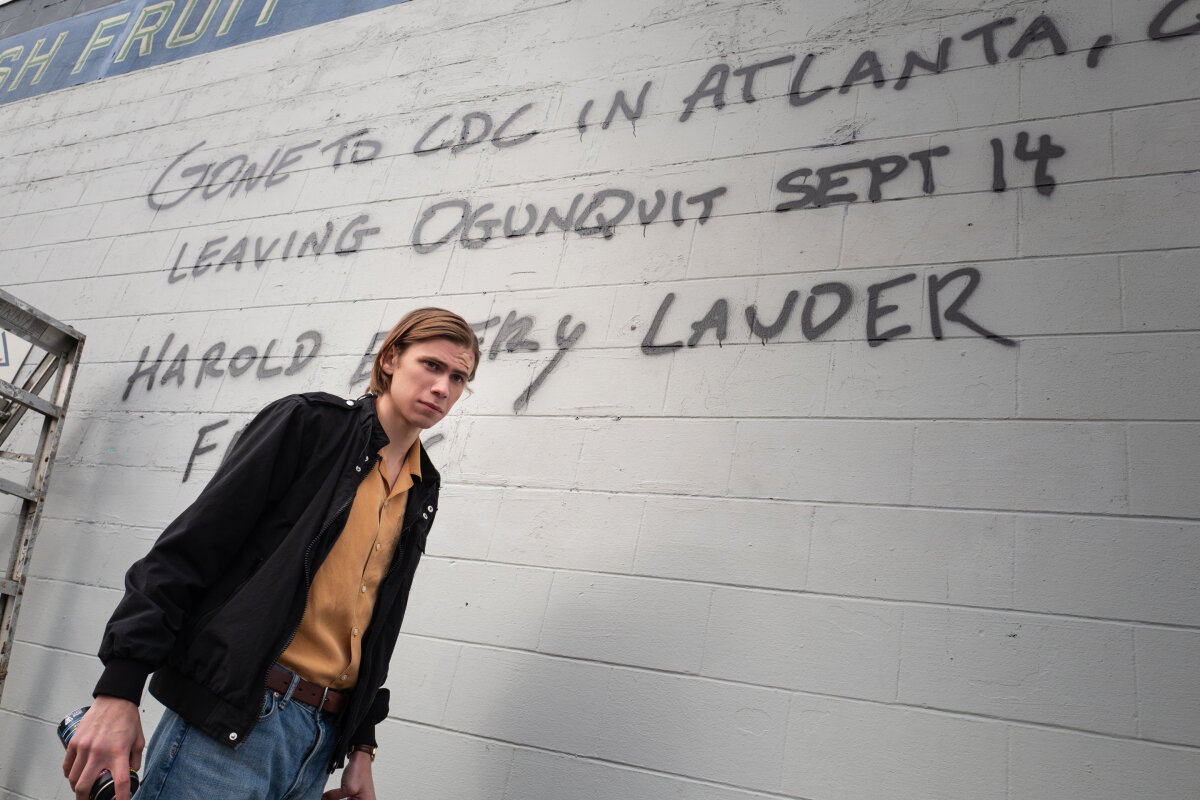
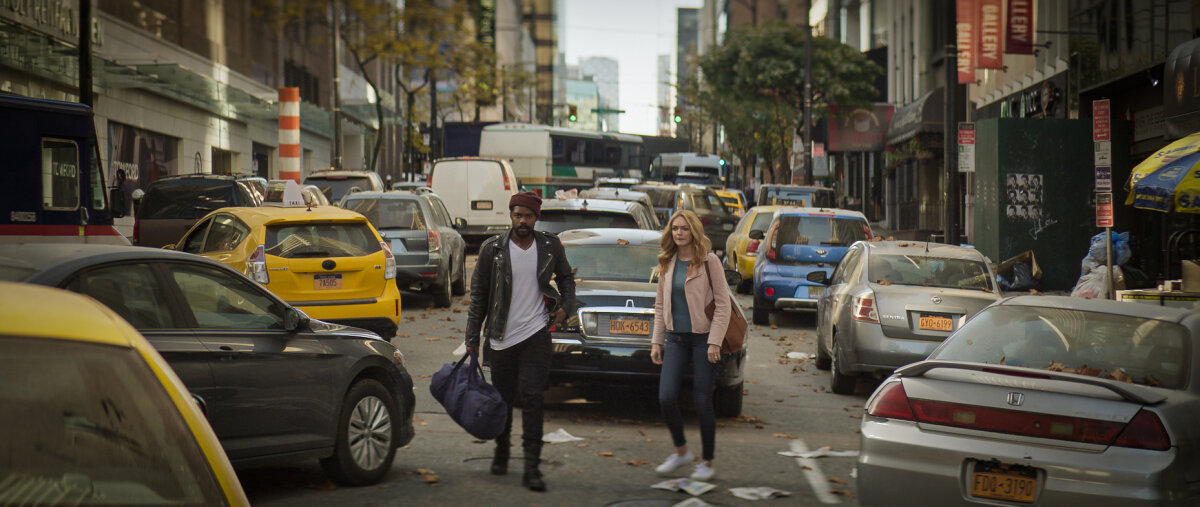
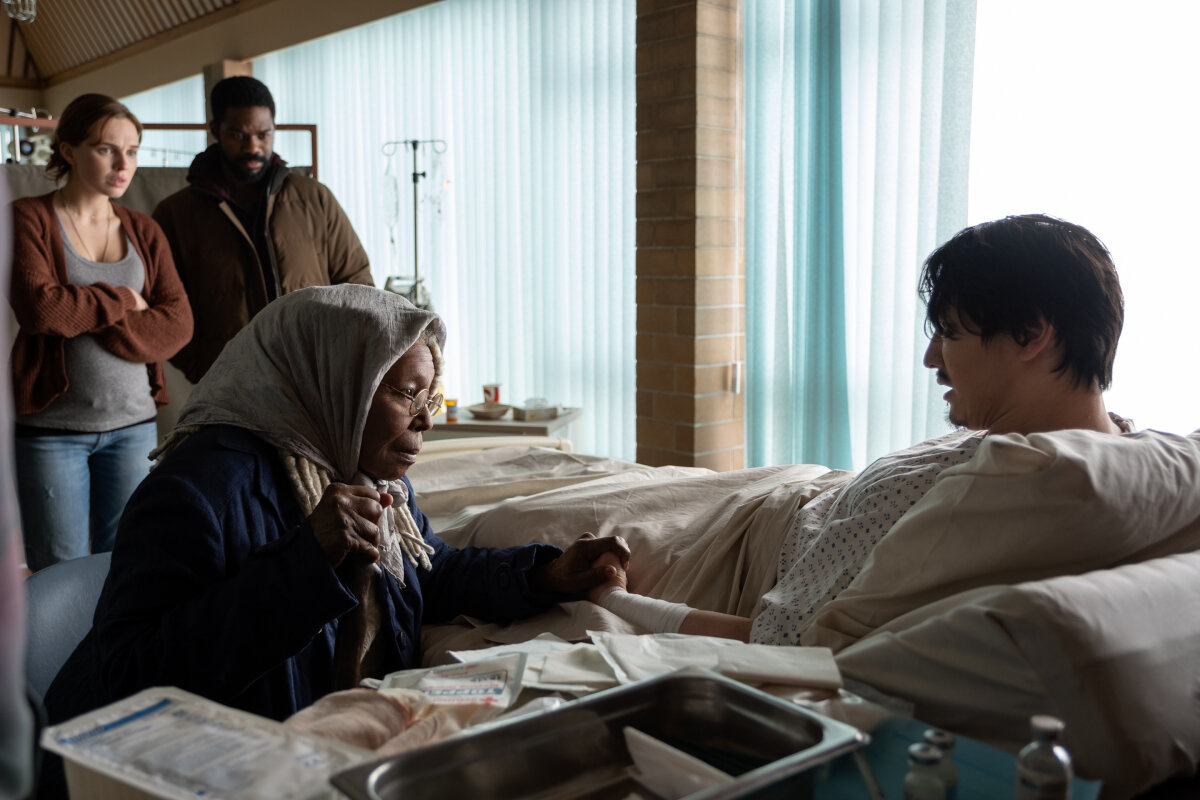
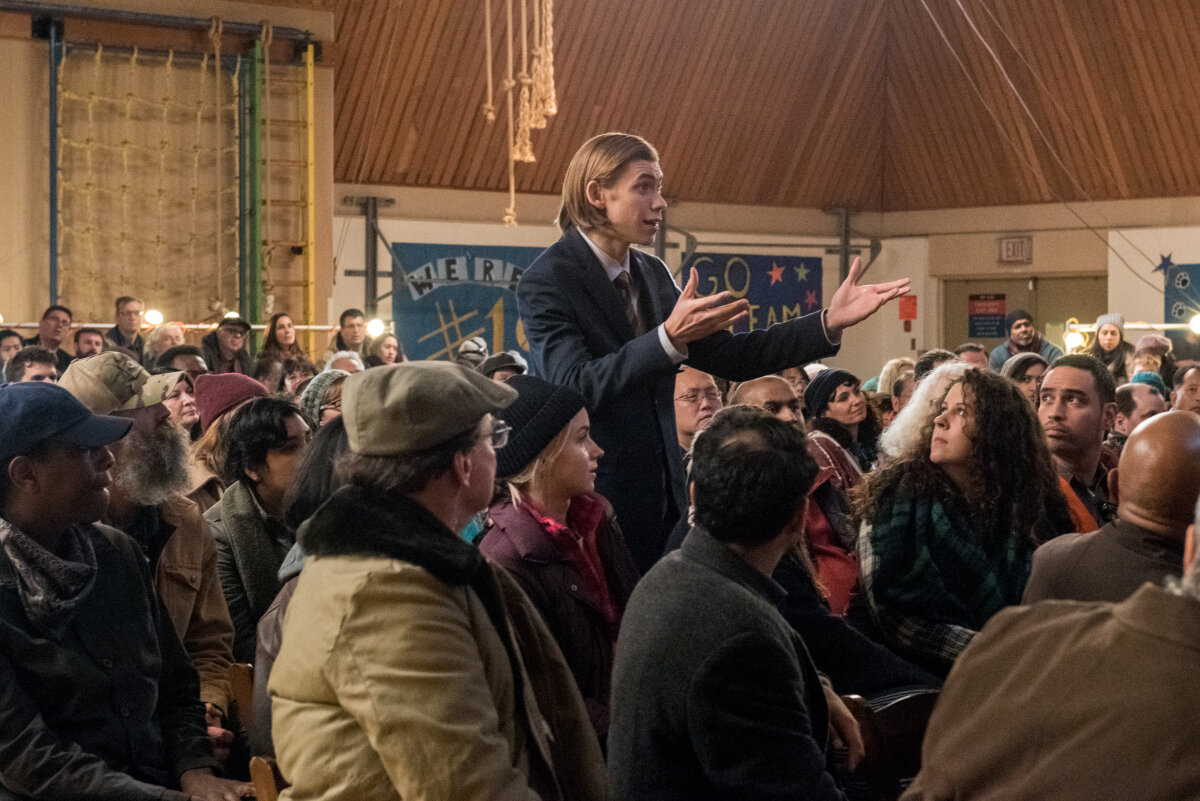
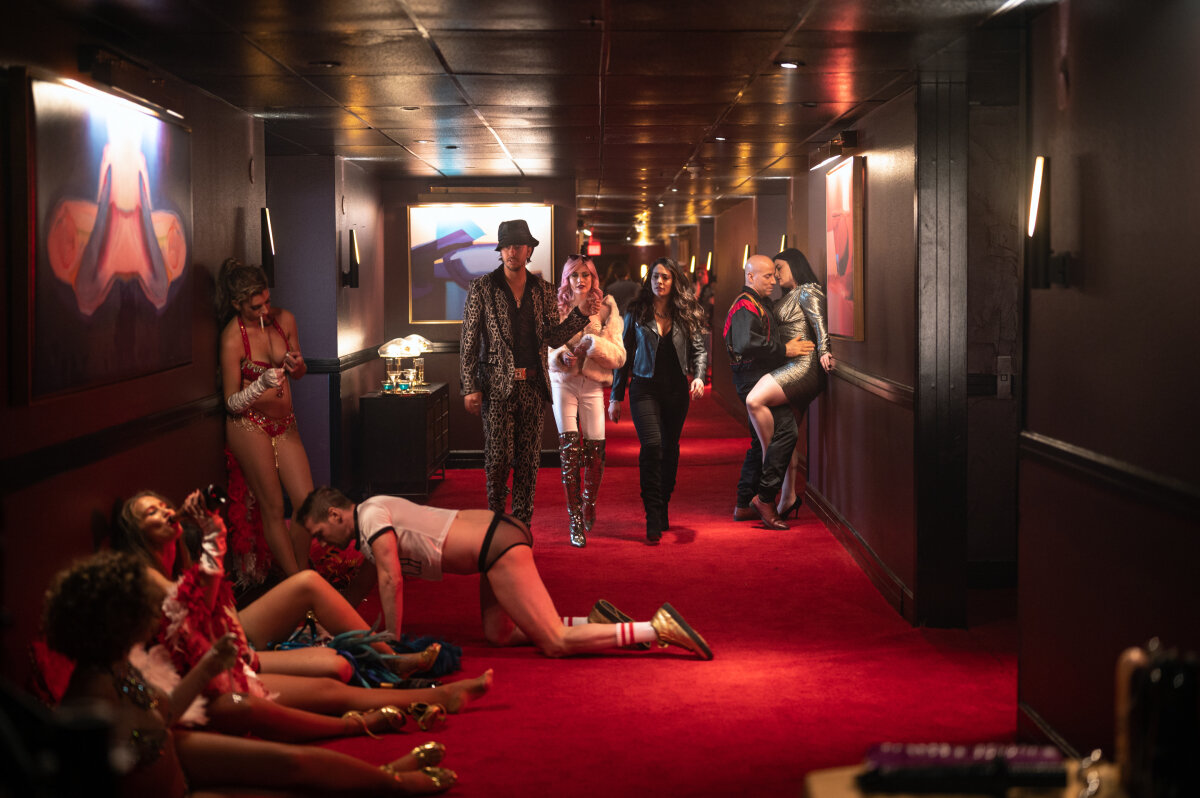
![[Rainbow Christmas 2020] Who Loves Christmas Horror Anthologies? I Do!](https://images.squarespace-cdn.com/content/v1/5b39608d75f9eef54c62c3f0/1608214817272-M4QLXMLV4R8J58WQN7IU/deatch.jpg)
![[News] Shudder Acquires Feminisit Revenge Fable Violation ahead of its International Premiere at Sundance](https://images.squarespace-cdn.com/content/v1/5b39608d75f9eef54c62c3f0/1608149340291-DGGQAND3MCFBPYJCK7SR/unnamed%286%29.png)
![[The Outsider recap with Joe Lipsett] "In the Pines, in the Pines" Sets Up a Thrilling End Game to Come](https://images.squarespace-cdn.com/content/v1/5b39608d75f9eef54c62c3f0/1581972806104-71KKN6RSI2F07NGJSTSS/outsider-4.png)
![[The Stand Review w/ Joe Lipsett] My Laws! "Blank Page" Gets a Flashback Right But Still Misses What Makes the Novel Great](https://images.squarespace-cdn.com/content/v1/5b39608d75f9eef54c62c3f0/1609383324506-WQDF6DVJZNES0QDNKNH2/116759_0310_RT.jpg)